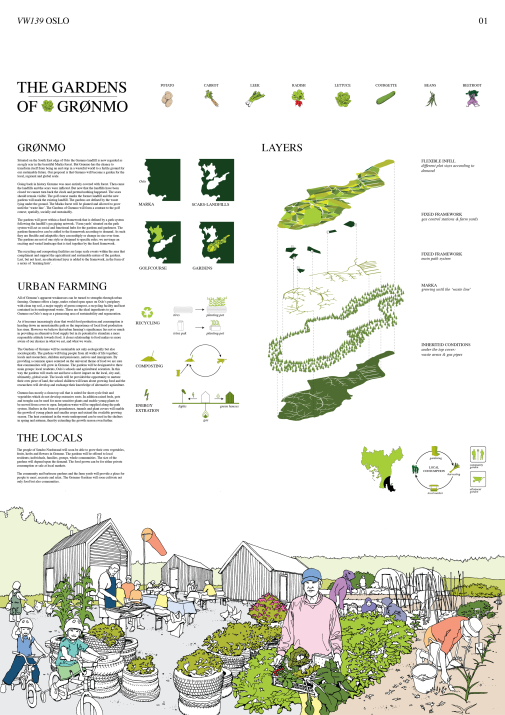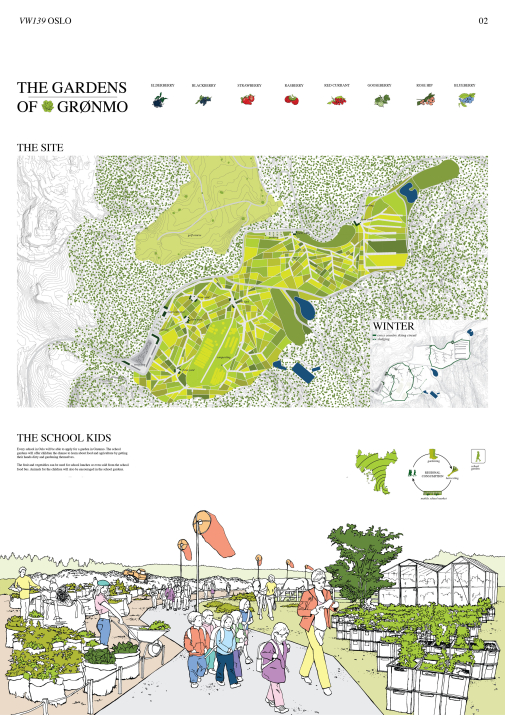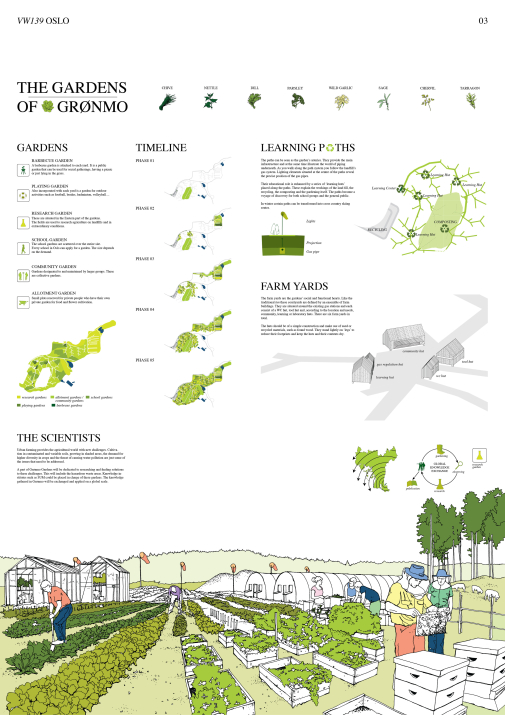Project:
Gardens of Grønmo
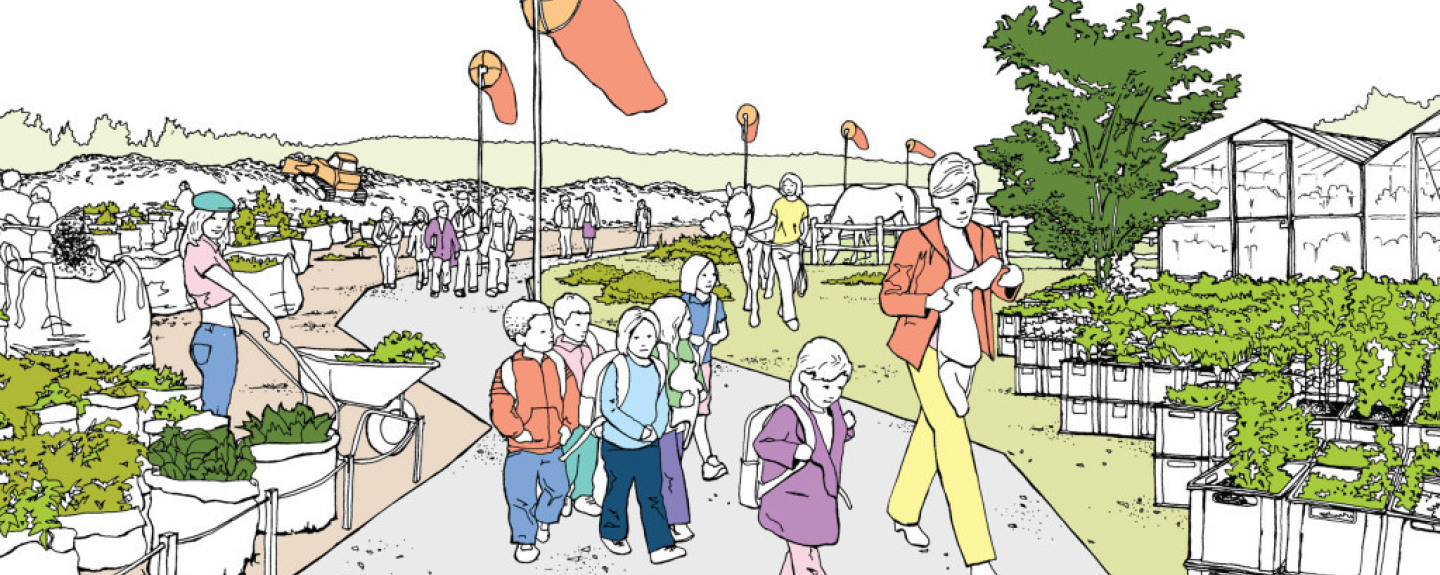
About
-
Situated on the South East edge of Oslo the Grønmo landfill is now regarded as an ugly scar in the beautiful Marka forest. But Grønmo has the chance to transform itself from being an end stop in a wasteful world to a fertile ground for our sustainable future. Our proposal is that Grønmo will become a garden for the local, regional and global scale.
Going back in history Gronmo was once entirely covered with forest. Then came the landfills and the scars were inflicted. But now that the landfills have been closed we cannot turn back the clock and pretend nothing happened. The scars should remain visible. The golf course marks the former landfill and the new gardens will mark the existing landfill. The gardens are defined by the waste lying under the ground. The Marka forest will be planted and allowed to grow until the 'waste line' The Gardens of Grønmo will form a contrast to the golf course; spatially, socially and sustainably.
The gardens will grow within a fixed framework that is defined by a path system following the landfill's gas piping network. 'Farm yards' situated on the path system will act as social and functional hubs for the gardens and gardeners. The gardens themselves can be added to the framework according to demand. As such they are flexible and adaptable; they can multiply or change in size over time.
The gardens are not of one style or designed to specific rules; we envisage an exciting and varied landscape that is tied together by the fixed framework. The recycling and composting facilities are large scale events within the area that compliment and support the agricultural and sustainable nature of the gardens.
Last, but not least, an educational layer is added to the framework, in the form of a series of "learning huts".
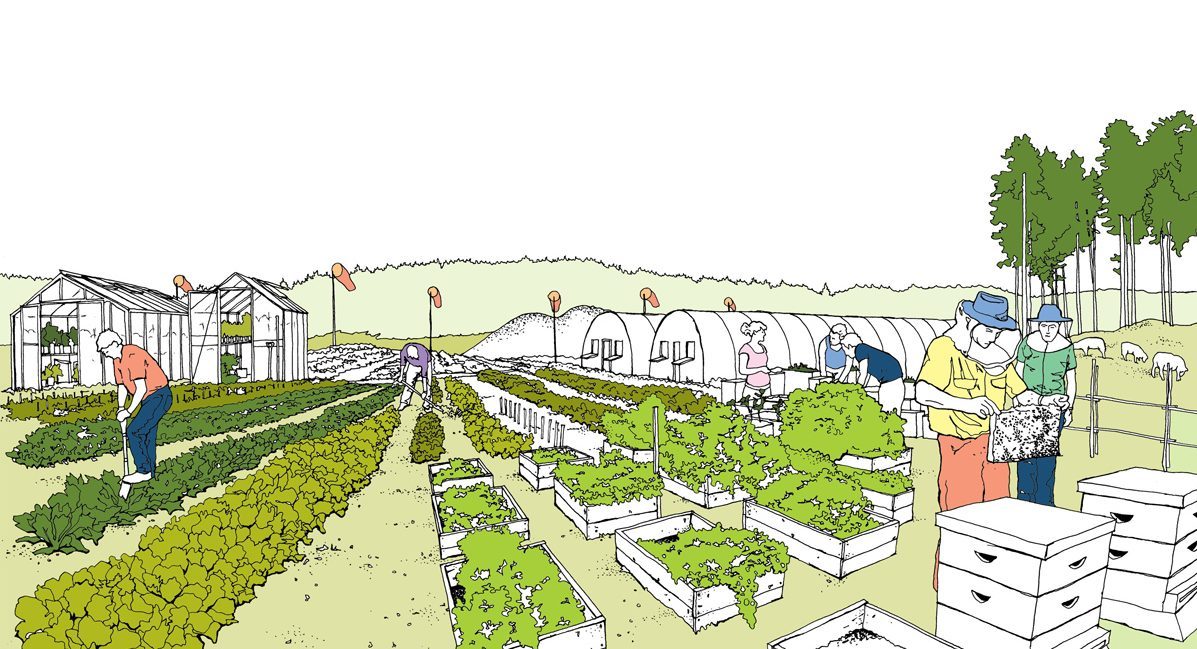
All of Grønmo's apparent weaknesses can be turned to strengths through urban farming. Grønmo offers a large, under-valued open space on Oslo's periphery with clean top soil, a major supply of green compost, a recycling facility and heat contained in its underground waste. These are the ideal ingredients to put Grønmo on Oslo's map as a pioneering area of sustainability and regeneration.
As it becomes increasingly clear that world food production and consumption is heading down an unsustainable path so the importance of local food production has risen. However we believe that urban farming's significance lies not so much in providing an alternative food supply but in its potential to stimulate a more responsible attitude towards food. A closer relationship to food makes us more aware of our choices in what we eat, and what we waste.The Gardens of Grønmo will be sustainable not only ecologically but also sociologically. The gardens will bring people from all walks of life together; locals and researchers, children and pensioners, natives and immigrants. By providing a common space centered on the universal theme of food we are sure that communities will grow in Grønmo. The gardens will be designated to three main groups: local residents, Oslo's schools and agricultural scientists. In this way the gardens will reach out and have a direct impact on the local, city and, ultimately, global scale. The locals will be provided the opportunity to nurture their own piece of land, the school children will learn about growing food and the researchers will develop and exchange their knowledge of alternative agriculture.
Grønmo has mostly a clean top soil that is suited for short cycle fruit and vegetables which do not develop extensive roots. In addition raised beds, pots and troughs can be used for more sensitive plants and enable young plants to be moved from cover to open. Irrigation water will be supplied along the path system. Shelters in the form of greenhouses, tunnels and plant covers will enable the growth of young plants and smaller crops and extend the available growing season. The heat contained in the waste underground can be used in the shelters in spring and autumn, thereby extending the growth season even further.
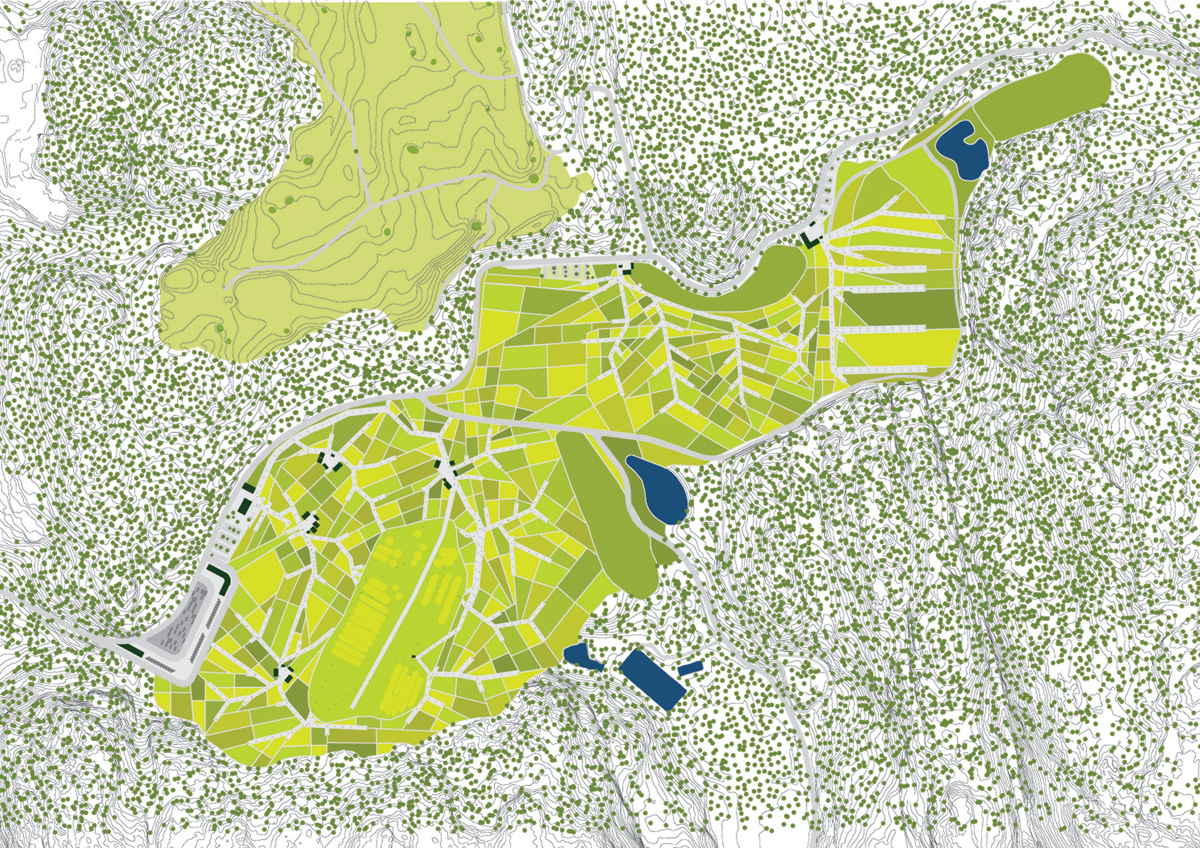
-
This scheme offers a persuasive proposal for ‘doing more with less’. It suggests an appropriate and resource-efficient approach to the contemporary challenges of Grønmo. The proposal is singular and coherent in its introduction of the program of allotment gardens – a program that has the potential to resonate with the local demography and neighbourhood context, and one that is in considerable demand in Oslo.
Allotment gardens, it has been argued are effective sites of integration between majority and minority populations, and between different minority populations, particularly amongst women. The proposal presents a relatively coherent development from concept to program to structure and spatial elements – suggesting a range of gardens, from private, and communal, to public and institutional. Based on a fixed framework supporting flexible infilling, the project has a robustness that allows it to be realized in part or in increments without being compromised by the lack of complete implementation. Additionally, it could potentially be mixed with other programs and still survive as a scheme.
However, the Jury agreed that the scheme was less convincing in its articulation of moments of public intensity – which remain somewhat vague in the presentation. It is also doubtful as to how it relates specifically to the uneven topography of the site. Further jury questions addressed the symbolic challenges associated with the cultivation of produce on a former waste dump area; and the potential ‘privateness’ of gardening if removed from the surrounding urban context – one that could stand as a further example of the tendency toward the neoliberal outsourcing of public space. Despite these concerns, the majority of the Jury felt that the proposal provides the potential to develop the area into an active leisure space and vibrant meeting point.
-
Silke Volkert (DE)
Magnus Weightman (GB)Contact information:
silkevolkert@gmx.de
Related projects
-

Gardens of Grønmo
All of Grønmo's apparent weaknesses can be turned to strengths through urban farming. Grønmo…
-
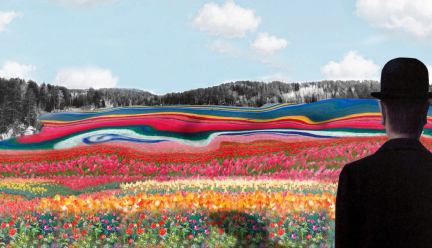
Norwegian Rhapsody
As industrial sites are being preserved as a symbol of human achievement, Grønmo may be considered…
-
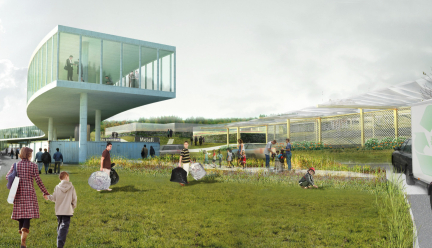
Active Edge
Active Edge is a radical strategy that specifically addresses the unitary dimension (spatial and…
